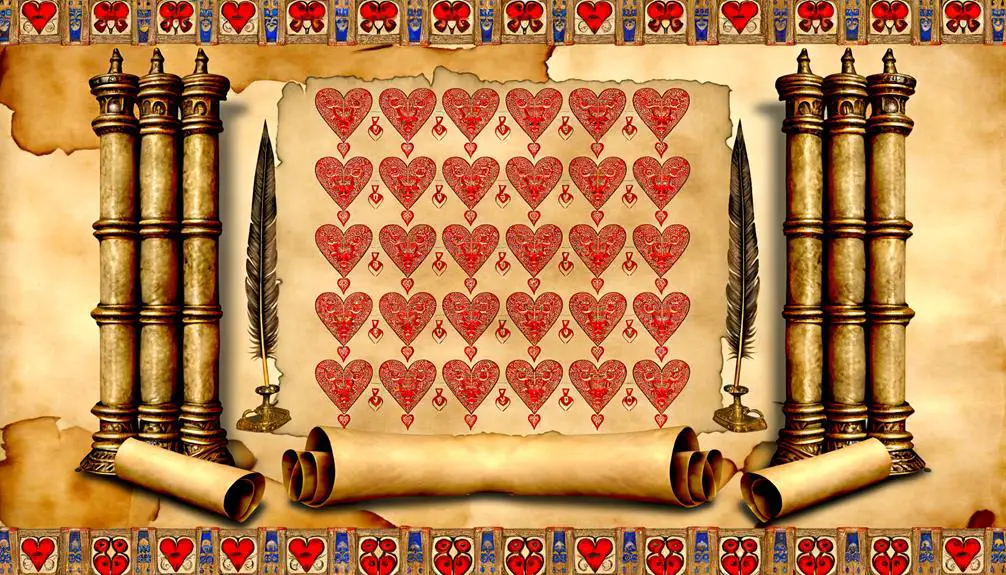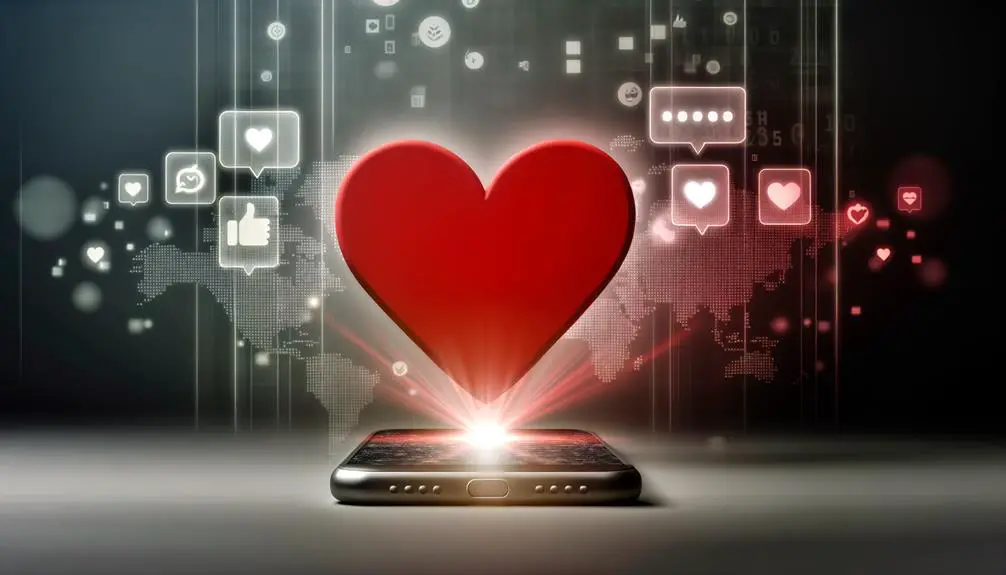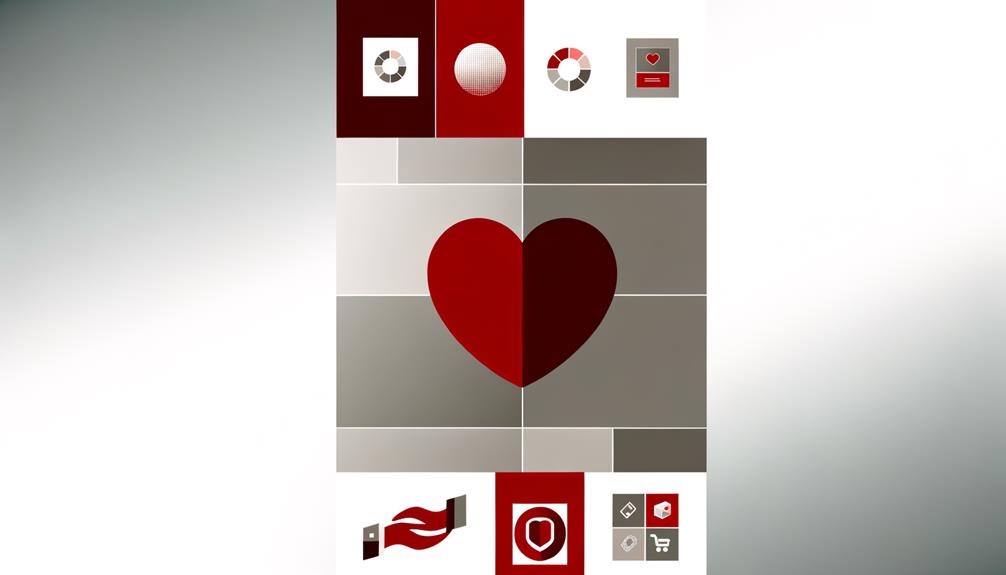What Is the Meaning of the Red Heart Symbol in Text Messages?
The red heart symbol universally signifies love, affection, and compassion, resonating through various cultures and historical epochs. From ancient times, it has been a potent emblem in art and religion, denoting fidelity and divine love.
In contemporary digital communication, it conveys deep emotions, crossing language barriers to foster connection and empathy. Widely used in romantic relationships, the symbol reflects passion and emotional intimacy.
In marketing, it evokes trust and warmth, enhancing brand loyalty. Understanding its rich origins and multifaceted roles reveals deeper layers of this iconic symbol's significance.
There's much more to unpack about its varied interpretations and uses.

Key Takeaways
- The red heart symbol universally represents love and affection across diverse cultures.
- It signifies romantic love, especially in Western traditions and on occasions like Valentine's Day.
- In digital communication, the red heart conveys emotions, transcending language barriers.
- It symbolizes deep emotional connections and loyalty in romantic relationships.
- Brands use the red heart to evoke warmth, trust, and emotional engagement.
Historical Origins

Tracing the historical origins of the red heart symbol reveals its deep-rooted significance in various cultures and civilizations. The heart shape, as we recognize it today, can be traced back to ancient times, with early depictions found in the art of the Indus Valley Civilization, dating back to 3300–1300 BCE.
Additionally, ancient Greeks and Romans used ivy and fig leaves, resembling the heart shape, as symbols of fidelity and love. This emblem evolved through the Middle Ages, where it gained prominence in religious art representing divine love and compassion.
The Renaissance further cemented its association with romantic love through literature and art. Understanding these historical contexts provides a richer appreciation for the ubiquitous red heart symbol we cherish today.
Cultural Significance

The red heart symbol, universally recognized as an emblem of love and affection, holds profound cultural significance across diverse societies.
In Western cultures, it is emblematic of romantic love, often seen in celebrations like Valentine's Day.
Eastern traditions, particularly in Japan, extend its meaning to include deep friendship and familial bonds.
In many African cultures, the heart symbol signifies life and cruciality, reflecting communal values and interconnectedness.
Across religious contexts, it can represent divine love and compassion, as seen in Christianity's Sacred Heart.
This multifaceted symbol transcends language barriers, offering a universal shorthand for expressing profound emotions.
Its pervasive presence in art, literature, and rituals underscores its enduring impact on human connection and cultural expression.
Digital Communication

In the domain of digital communication, the red heart symbol has evolved into a powerful tool for conveying a wide spectrum of emotions, from deep affection to unwavering support. This ubiquitous icon transcends language barriers, allowing individuals to express sentiments that words alone may fail to capture.
Its versatility makes it a staple in social media interactions, text messages, and even professional settings where a touch of warmth is warranted. Whether acknowledging someone's achievement, offering condolences, or simply showing appreciation, the red heart fosters a sense of connection and empathy.
It serves as a universal shorthand for positive emotions, bridging gaps and fostering understanding in our increasingly digital world.
Romantic Relationships

When it comes to romantic relationships, the red heart symbol often serves as an emblem of deep emotional connection and love. This universally recognized icon transcends linguistic barriers, conveying sentiments that words sometimes fail to express.
Its use signifies a profound bond, encompassing affection, passion, and loyalty. Whether exchanged through handwritten notes, digital messages, or gifts, the red heart encapsulates the essence of romantic devotion. It acts as a visual shorthand for feelings that are both intense and intimate, offering reassurance and a tangible representation of one's emotional investment.
Understanding the red heart's significance can enrich romantic interactions, fostering a deeper appreciation for the subtleties and expressions that sustain meaningful partnerships.
Marketing and Branding

Beyond its importance in romantic relationships, the red heart symbol also plays a pivotal role in marketing and branding. It serves as a potent tool for emotional engagement and brand loyalty. Brands leverage this symbol to evoke feelings of warmth, trust, and affection, creating a deeper connection with their audience.
The red heart is often used in campaigns to symbolize care and passion, thereby humanizing the brand. For instance, companies in the hospitality and healthcare sectors frequently utilize this emblem to convey empathy and dedication.
Additionally, social media platforms incorporate the red heart in likes and reactions, fostering a sense of community and approval. This strategic use of the red heart symbol can significantly enhance brand perception and consumer loyalty.
Conclusion
The red heart symbol transcends time, embodying historical heritage, cultural connotations, digital dialogue, romantic resonance, and marketing magnetism.
Its pervasiveness and power persistently portray profound passion and personal connection.
Understanding its multifaceted meanings fosters a deeper appreciation for this ubiquitous icon, which seamlessly bridges eras and emotions.
The symbol's enduring appeal underscores its universal significance, making it a timeless touchstone in human expression and communication.





